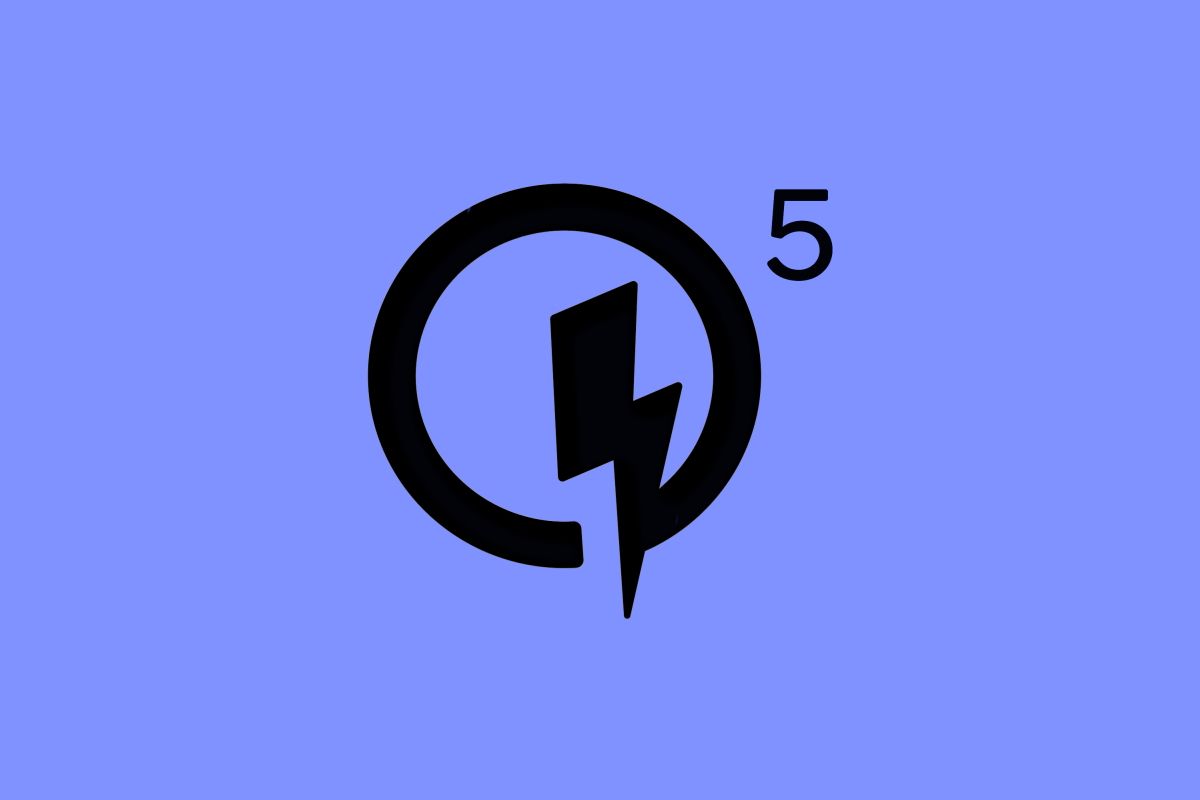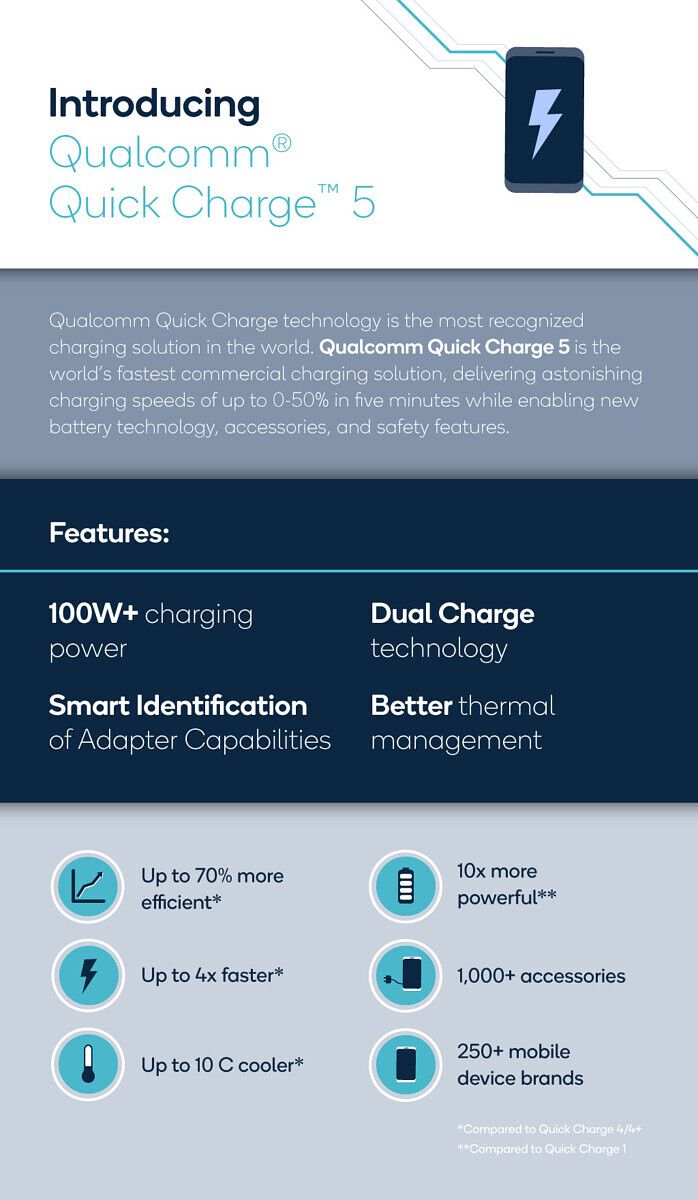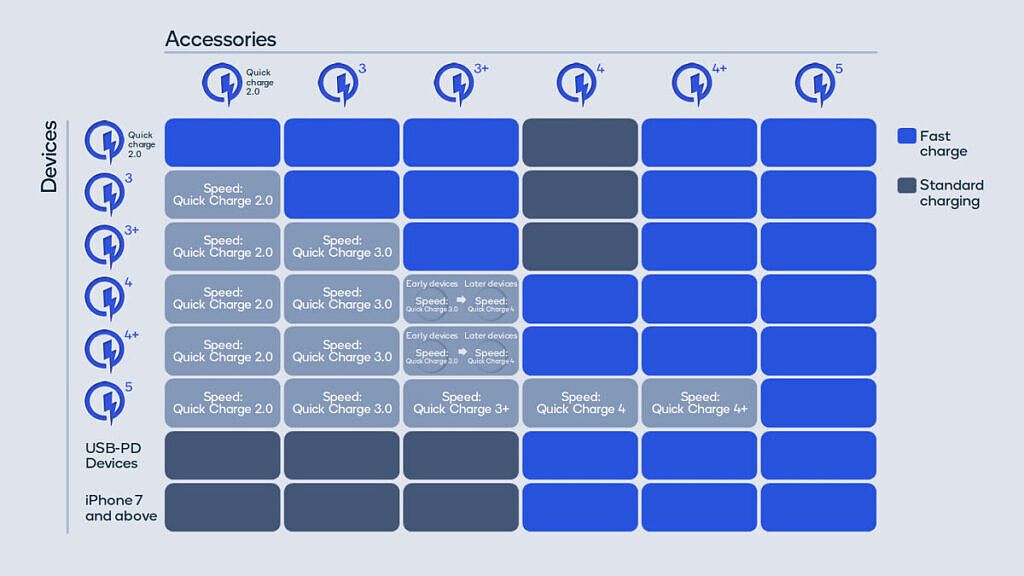Every year, we have seen advancements in fast charging technologies in Android phones. Qualcomm was one of the pioneers in the fast charging space with Quick Charge 1.0 back in 2013, bringing 10W charging. Quick Charge 2.0, released in 2015, brought 1.5x charging speed improvements with 18W charging. Quick Charge 3.0 and Quick Charge 4.0, released in 2016 and 2017 respectively, kept the charging wattage constant at 18W, while Quick Charge 4+ brought support for up to 27W and 45W chargers late in its life cycle. Now, Qualcomm has announced Quick Charge 5, bringing some exponential improvements. It will bring 100W+ fast charging to future Android phones. Qualcomm says it's the fastest commercial charging technology for Android devices.
This month, we have seen vendors such as OPPO, Realme, and iQOO announce their custom proprietary 125W/120W fast charging technologies. Vendors such as OPPO and Realme use dual-cell battery designs to achieve 65W/55W charging in their current products, and by doing this, they have been able to leave other competitors behind in terms of charging speed. Qualcomm's Quick Charge hadn't received an update in three years since Quick Charge 4, but Quick Charge 5 seems to be well worth the wait. Qualcomm says it delivers "unprecedented mobile phone charging speed and efficiency improvements compared to previous versions" while enabling new battery technology, accessories, and safety features. Quick Charge 5 is the first commercially viable fast charging platform to support more than 100W charging power in a phone, according to Qualcomm.
Quick Charge 5 will allow users to charge devices from 0 to 50% battery power in just five minutes, which represents the fastest smartphone charging capabilities available. A 0 to 100% charge, on the other hand, will take only 15 minutes. This is with respect to a 4,500mAh battery (1.5°C charge rate) and using the maximum power for a thermal limit of 40°C. The increase in wattage has been achieved by enabling device makers to use a stacked cell configuration, which enables 2x the voltage for the same current. This delivers double the charging speed. A single battery cell can be charged at up to 45-50W according to Qualcomm, and any higher wattage needs a stacked design as the efficiency drops. As for battery longevity concerns, Qualcomm says battery saver algorithms are there to extend battery cycle life, and identifying adapter capabilities (more on this below) helps them know what they are getting.
Quick Charge 5 also uses Qualcomm Battery Saver and the new Qualcomm Smart Identification of Adapter Capabilities technology to support "unparalleled efficiency" as well as help extend the battery life cycle on a user's device, according to the company.
Qualcomm maintains that Quick Charge is the industry-leading fast charging ecosystem, and Quick Charge 5 offers exponential improvements from its predecessors. It is 70% more efficient than Quick Charge 4 and offers 10 times the power delivery of Quick Charge 1.0. (10W x 10 = 100W.)
Quick Charge 5 supports 2S batteries and 20V of power delivery. It charges up to four times faster than the previous generation. Qualcomm is quick to note, however, that while it charges devices at extremely fast speeds, it also keeps extreme safety measures in mind. Quick Charge 5 features 12 separate voltage, current, and temperature protections, including USB-input overvoltage protection at 25V and external power controls beyond 30V. It also runs 10°C cooler than Quick Charge 4.
Quick Charge 5 enables Dual/Triple Charge technology, adaptive input voltage, INOV4, Qualcomm Battery Saver, and the new Qualcomm Smart Identification of Adapter Technologies tech, all of which work together to maximize power transfer efficiency, increase safety and help extend the battery life cycle on a user's device. The Smart Identification of Adapter Technologies means that Quick Charge 5 can identify the real capabilities of a power source and adjust charging behavior accordingly instead of relying on power sources advertising what they support, as not all sources are truthful in their claims. Examples of this are voltage behavior, current behavior, voltage ranges, power behavior, and others. This technology offers eight levels of voltage protection, three levels of current protection, three levels of thermal protection, three levels of timer protection, as well as additional system power safety features.
Qualcomm is introducing the next generation premium-tier power management ICs (PMIC), Qualcomm SMB1396 and Qualcomm SMB1398. They support 1SnP and 2SnP batteries, wired and wireless input paths, adaptive operation based on the power source (3 level buck and DIV/2), and scalability (primary and secondary to provide higher power). The new PMICs are engineered to provide maximum efficiency above 98%. They can support higher than 20V input voltage operation to accommodate the highest power levels from both wireless and wired power sources. The Qualcomm SMB1396/SMB1398 are now available.
Qualcomm says Quick Charge technology is available on 250+ mobile devices, 1000+ unique accessory products, and controllers, ranging from car adapters to docking stations. Thus, it unifies the phone and laptop charging ecosystem. Quick Charge 5 is backward compatible with Quick Charge 2.0, 3.0, 4, and 4+, and existing phones powered by Snapdragon. It's a single standard that addresses a variety of charging implementations in mobile devices, as it supports more than 100W charging capabilities within the same footprint as the previous 45W solutions. This cuts down on the need to buy additional Quick Charge-certified accessories across devices. Quick Charge 5 is optimized to take advantage of both USB-Power Delivery (with Programmable Power Supply) and Type-C technologies.
Quick Charge 5 accessories will have 3.3V-20V of voltage and 3A, 5A (standard), or >5A of current. They will offer >45W of power and will support USB-PD as the communication protocol. Thankfully, they will be backward compatible, which means they can be used with previous-generation phones as well. Qualcomm also promises thermal protection, and the accessories will be connector agnostic as well. Quick Charge 5 chargers can be used with laptops as well, as long as they support USB Type-C PD.
Xiaomi has committed to using Quick Charge 5 in its future smartphones. Quick Charge 5 is currently sampling with customers and is expected to appear in commercial devices in Q3 2020. For now, it's supported on the Snapdragon 865 and the Snapdragon 865 Plus, and it will be supported on future premium and high-tier Snapdragon SoCs. Mid-range SoCs such as the Snapdragon 690, Snapdragon 720G, and Snapdragon 765G will have to miss out on 100W+ charging for now, but at this current rate of advancement, I wouldn't be too surprised to see mid-range Snapdragon platforms feature the technology in 12-18 months as Qualcomm has specifically promised the technology will eventually move to the lower product tiers.
To learn more about Quick Charge 5, head over to Qualcomm's website.



